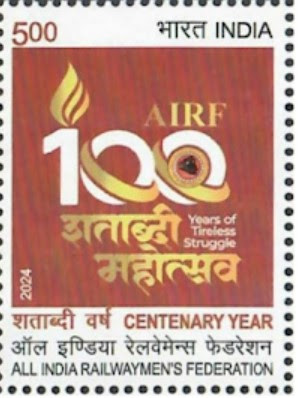
Durga Puja & Dussehra, Kolkata
Hi Readers ! The Navratri Festival brings delight at us all. The spirit of Fun and merriment will extend right upto Diwali. In today's Post a beautiful stamps issued by Nepal on Goddess Durga and a recent issue on Dussehra by India Post. As It is the time of merry making I have some exquisite stamps on dances from Malaysia issued in the year 2005. Malaysia is blessed with multi-ethnic community with different values, culture and heritage. This assortment of different culture, values and race have resulted in the various cultural dance forms. Hope today's post will enhance your joy of the festival. In our series the last se-tenants of this year's hot favourite - Aldabra Giant Tortoise from the album of our distinguished member Mr. Shrikant Parikh. Our sincere thanks to Mr. Parikh and Mr. Pradip Jain & Mr. V.K. Sabharwal for their valuable contribution to Rainbow Stamp Club. This is all for today !.......Greetings to all of you on Navratri Festival !
 Goddess Durga
Goddess DurgaDances of Malaysia

The expressive power of dance as an art form has endured for centuries, in many different parts of the world. Malaysia, with her rich intermingling of cultures, has a particularly rich and varied dance heritage. Whether performed by Malays, Chinese, Indians, or by the peoples of Sabah and Sarawak, each performance is a rich tapestry which weaves together exquisite costumes and equally delicate and expressive movements. Whether telling a story, celebrating a harvest, or celebrating life itself, the Dances Of Malaysia are among our most cherished cultural traditions.

1. Traditional Malay dances are steeped in history and legend. The Kelantanese Tarian Asyik is supposed to represent the flight of birds - and the fluid grace of the dancers, as they sway gently to the sound of traditional instruments such as the serunai, gambang and rebab, certainly takes the imagination on a flight of fancy.

2. Chinese dances, on the other hand, use simple props such as Fan, Umbrella, and Handkerchief as extensions of the dancer's own emotions. For instance, the fan is used to express joy and happiness. The umbrella is used primarily to express passionate feelings, either between a male and female or between an individual and his or her surroundings.

3. Indian dances are many and varied; some express a more spiritual angle, others express the simple joys of village life. Indian dances can be divided into classical and folk styles. Kathak dance is another form of classical dance. The word Kathak is derived from Katha, meaning "the art of story telling". From its early form as a devotional expression dedicated to the Hindu gods, Kathak gradually moved out into the courts of the rulers.

4. Dances Of Sabah and Sarawak - perhaps the region of Malaysia which is most blessed with forms of dance from Sabah and Sarawak. The sheer variety reflecting the many different ethnic groups of the land. The Sumazau is often regarded as the state dance of Sabah. It is simple, yet graceful and evocative, as the dancers, clad in authentically Kadazan black velvet, sway like birds to the sounds of gongs.
From Se-tenant Album of Shrikant Parikh
Theme - Fauna
Aldabra Giant Tortoise




Date of Issue - 2 August 2008

















.png)













1 comment:
"Stamp Your Feet (to the Heavy Beat)" and the big party track, "Everybody Dance!" where The Wiggles are joined by all their friends, Wags the Dog, Dorothy the Dinosaur, Henry the Octopus and Captain Feathersword.
---------
smithsan
smm
Post a Comment